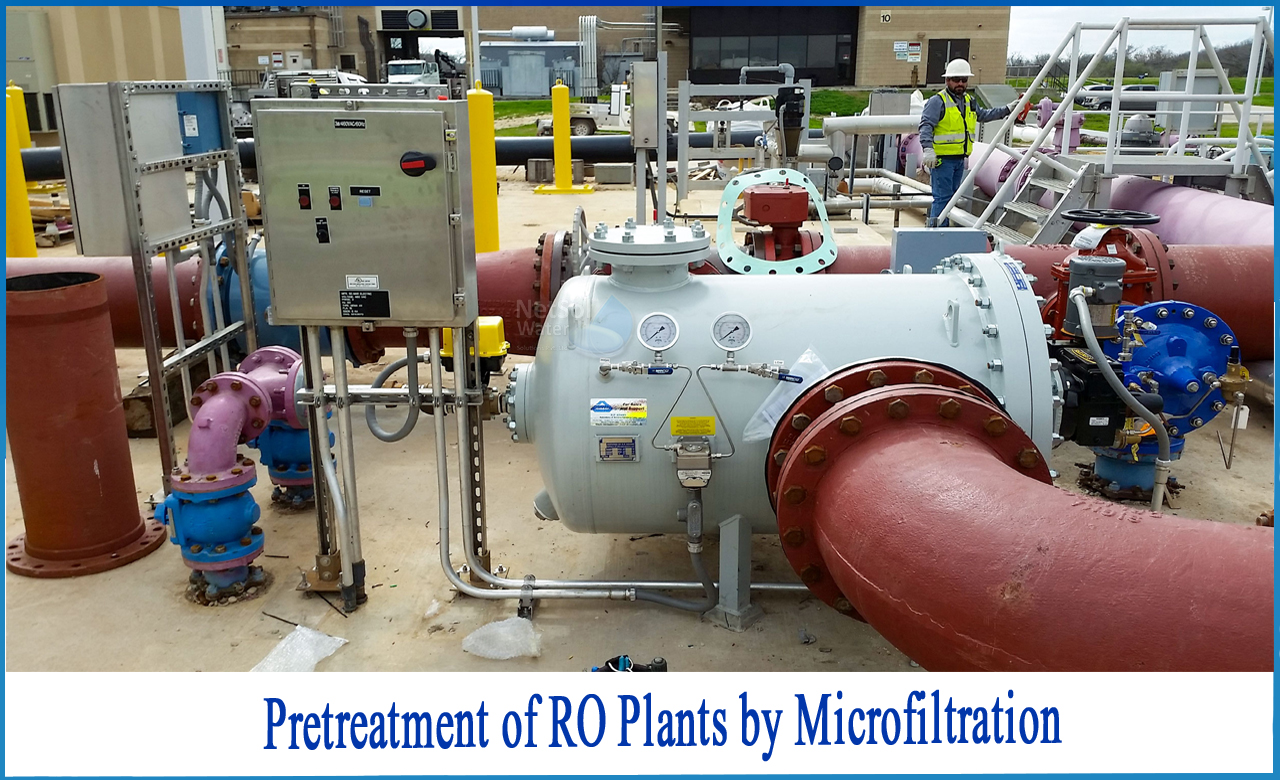Why Pretreatment require of RO Plants by Microfiltration?
Microfiltration (MF) is a filtration technology that is commonly used in water treatment. Multiple suspended solids or colloidal components are removed from an incoming fluid stream using a microporosity membrane with applied pressures ranging from 0.1 to 2 bar. The pore size range of a conventional MF membrane is 0.1 to 10 m.
Microfiltration or MF has a wide range of applications
MF has a wide range of industrial applications, the most common of which is to eliminate germs from drinking water. It is widely used in the food and dairy industries, biotechnology, pharmaceutical sector, and the treatment of oil and latex emulsions. It is also used in large-scale municipal wastewater management, the treatment of toxic industrial waste effluent, and the removal of contaminants from drinking water.
RO market has seen the introduction of new pre-treatment equipment’s_
Back washable capillary microfiltration and ultrafiltration membrane modules make up the system. This innovative apparatus is capable of operating consistently at very high recovery rates and low feed pressure. The novel capillary systems can deliver higher feed water quality than a succession of standard filtration processes.
Because of the vast range of pore sizes, MF membranes can be employed in a variety of disciplines that need the separation of virus, bacteria, aerosols, and a plethora of macromolecules from fluids.
MF membranes can be employed as both a surface and a depth filter
Surface filters that use a cross-flow pattern can function for lengthy periods of time without needing to be cleaned, whereas MF membranes used as depth filters only use a dead-end mode of flow and the membranes are only needed once.
Use of MF in pre-treatment
MF membranes are used in wastewater treatment, pre-treatment in dairy and milk processing, fruit juice concentration, wine and beverage processing, macromolecule separation in pharmaceutical production processes, and as a pre-treatment filter prior to ultrafiltration (UF), nanofiltration (NF), and reverse osmosis (RO) membrane-based processes due to their separation capability.
Microfiltration is appropriate for treating pigment dye baths as well as subsequent washing baths. The dye bath chemicals that are not filtered by microfiltration will remain in the bath. Microfiltration can also be used to prepare water for nanofiltration or reverse osmosis.
Membrane configuration
Microfiltration membranes can often operate in one of two ways_
1: Cross-flow filtration occurs when the fluid flows tangentially across the membrane. A portion of the treated liquid in the feed stream is collected below the filter, while the rest of the water passes through the membrane untreated. Cross flow filtering is regarded as a single operation rather than a process.
2: Dead-end filtration occurs when all process fluid flows and all particles larger than the membrane's pore diameters are stopped at the membrane's surface. Cake formation occurs when all of the feed water is treated at once. This method is commonly used for batch or semicontinuous filtration of low concentration solutions.
What do we offer?
Netsol Water is a renowned producer of water and wastewater treatment plants. Based on client feedback and quality, we are the most demanding organization in the Water industry. We have a reputation for being the Top Commercial RO plant manufacturer, Industrial RO plant manufacturer, Sewage treatment plant manufacturer, and effluent treatment plant manufacturer. Aside from that, our USP is 24x7 customer assistance.
For further assistance, inquiry, or product-purchase-related questions, call us at +91-9650608473 or email at enquiry@netsolwater.com.



